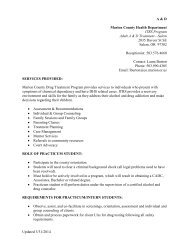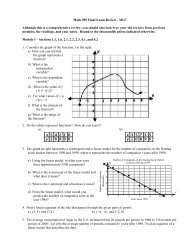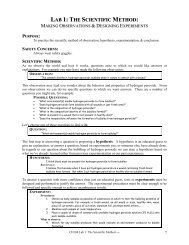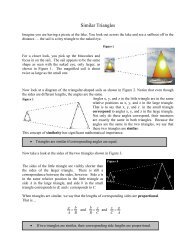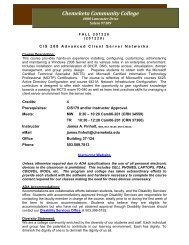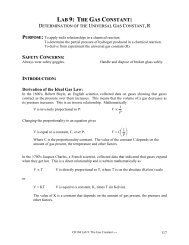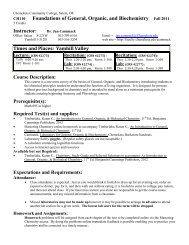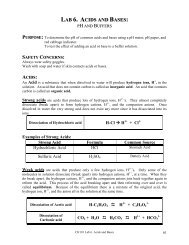Chem 102b Experiment 14: Part II Revised Preparation of Esters
Chem 102b Experiment 14: Part II Revised Preparation of Esters
Chem 102b Experiment 14: Part II Revised Preparation of Esters
You also want an ePaper? Increase the reach of your titles
YUMPU automatically turns print PDFs into web optimized ePapers that Google loves.
C: The Distillation<br />
1. Transfer the dry ester to the round bottom flask and assemble a distillation apparatus.<br />
Remember to clamp the round bottom flask, the condenser, and the vacuum adapter to a<br />
ring stand. When inserting the thermometer into the thermometer adapter, use extreme<br />
caution. The position <strong>of</strong> the thermometer needs to be at the "y" junction <strong>of</strong> the distilling<br />
adapter to correctly determine the boiling point <strong>of</strong> the ester.<br />
2. Use a clean 250-mL round bottom flask (which is clamped to ringstand) to receive the<br />
distillate.<br />
3. Have your instructor check your setup before proceeding.<br />
4. Raise the sandbath/hotplate (seated on a ring that is clamped to a ringstand) to the<br />
reaction flask. Be certain to cover the lower 1/3 <strong>of</strong> the reaction flask with sand.<br />
5. Turn the hotplate on high. Make a note <strong>of</strong> your esters boiling point. When you are<br />
within 20 degrees <strong>of</strong> your bp, lower the heat to a moderate heating level. Record<br />
temperature every minute and make observations in your lab notebook.<br />
6. Note the temperature when material begins to come out <strong>of</strong> the adapter. Note the<br />
temperature again when it stops coming out. This is your boiling point range for your<br />
ester.<br />
7. The material you have collected should be your pure ester. You will take an IR spectra <strong>of</strong><br />
this material. Please label your flask according. Note the smell <strong>of</strong> your groups esters in<br />
your lab notebook.<br />
D: Infrared Spectroscopy<br />
1. Check out an IR card from the 3 South preproom window.<br />
2. Your instructor will demonstrate how to run a background on the instrument.<br />
3. Using a micropipet, place 1-2 drops <strong>of</strong> your ester onto the cards surface.<br />
4. Run a spectrum <strong>of</strong> your ester.<br />
5. Print the spectrum.<br />
6. You will have IRs <strong>of</strong> the starting materials: ethanol, benzyl alcohol, isopentanol, octanol,<br />
and acetic acid.<br />
7. Compare the IR <strong>of</strong> your ester with the starting materials and the other esters in your<br />
group. Which peaks are shared; which peaks are unique to your spectra; do you have any<br />
starting materials in your sample; do you have any water in your sample? Remember that<br />
it is not efficient or effective to try to identify all the peaks <strong>of</strong> the spectrum. The peaks<br />
that should interest you most are at Ester--1735 cm -1 (C=O)strong absorption, 1280-<br />
1050 cm -1 (C-O) usually gives two or more absorptions with one stronger than the others<br />
do. Acetic Acid will have a very broad O-H peak at 3300-2500 cm -1 , the C=O peak will<br />
be a broad stretch at 1730-1700 cm -1 , and the C-O peak will be strong in the 1320-1210<br />
cm -1 range.



